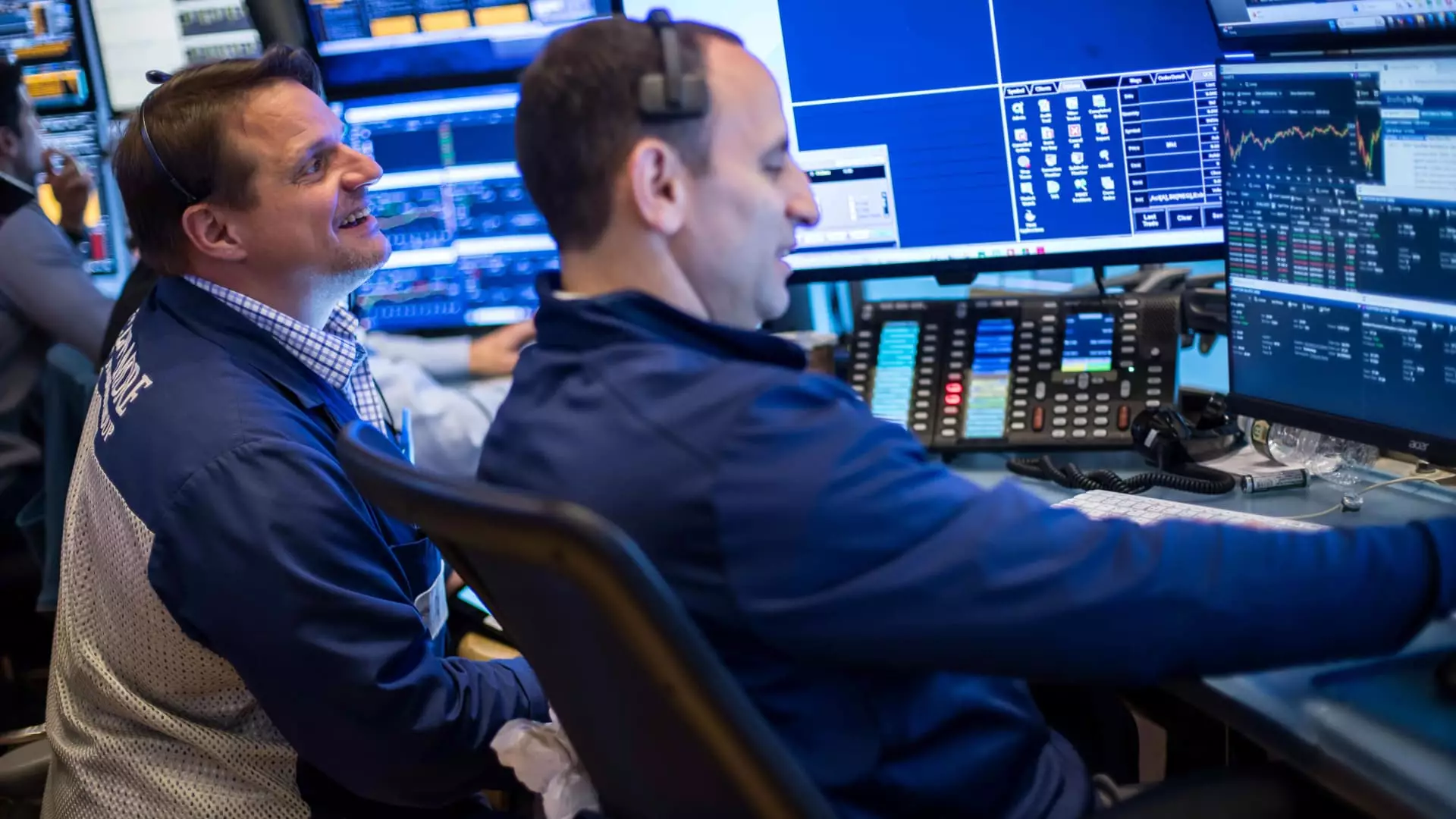In an unexpected twist, U.S. stocks surged on Friday following the release of nonfarm payroll data that surpassed most predictions, invigorating the market and quelling fears of an economic downturn. The Dow Jones Industrial Average, a barometer of industrial American stocks, soared by a staggering 443.13 points—an increase of 1.05%—marking a noteworthy closing figure of 42,762.87. During peak trading moments, the index crested over 600 points, an indication of strong investor sentiment. Similarly, the S&P 500 and Nasdaq Composite mirrored this positive trend, with gains of 1.03% and 1.20%, respectively. The former crossed the 6,000 threshold for the first time since February, a significant psychological level for many investors.
Yet, the story behind these numbers is not just about a good report; it unveils the fragile balance between optimism and the looming uncertainties that have characterized the economic narrative of recent months. While Friday’s data indicated that 139,000 jobs were added in May—well above the expected 125,000—this follows a string of disconcerting economic signals earlier in the week, raising questions about the continuity of this growth.
The Unraveling of Positive Momentum?
This buoyant stock market reaction comes on the heels of conflicting economic data that raises red flags about the sustainability of this growth. For instance, prior to Friday’s hopeful report, the labor market showed signs of fatigue, with unemployment claims exceeding expectations and private sector job growth severely underperforming. ADP’s announcement of just 37,000 additional jobs in May starkly contrasted with the anticipated 110,000, and weaker-than-anticipated activity in the services sector compounded the worries. Collectively, these data points reflect an economy struggling to maintain its footing, where each encouraging update feels like a temporary reprieve rather than a clear path forward.
What this showcases is the paradox facing investors and policymakers alike: while immediate data may signal resilience, underlying trends suggest potential fragility. Chief market strategist Anthony Saglimbene noted this dissonance, observing how the workforce remains robust despite economic hurdles. His assertion reflects a wider truth in today’s economic landscape—unforeseen elements such as tariff negotiations and inflation concerns could diminish these gains if not properly managed.
Policy Decisions: A Pivotal Factor for Growth
As we look forward, all eyes are on the upcoming Federal Reserve meeting scheduled for June 17-18. With the Fed tasked with navigating these tumultuous waters, the implications of their interest rate decisions have far-reaching consequences. Economists are keenly aware that the trajectory of inflation linked to tariffs could soon materialize, bringing with it a host of economic repercussions that could shake the foundations of the market. Saglimbene’s anticipatory remarks about the seasonal impacts of tariffs underscore the importance of cautious approaches as future economic reports emerge this summer.
On the political front, President Trump and his administration have offered flickers of hope with fresh trade negotiations set to take place in London. After a tumultuous week marked by social media conflicts and scrutiny regarding trade policy, Trump’s declaration for a constructive dialogue with China indicates a readiness for reconciliation. However, will this optimism translate into actionable change, or will it serve as just another headline for market fluctuations?
Investor Sentiment: The Power of Perception
Indeed, the markets operate not merely on hard data but equally on the perception of what that data represents. The current bullish sentiment can thus be fragile, as many investors await clarity in the economic and political landscape. As trading in major tech stocks such as Tesla, Nvidia, and Meta Platforms reflects this sentiment shift—a bounce back from previous declines related to external social tensions—the fundamental question remains: Do we have a robust foundation, or is this a classic case of markets responding to transient optimism?
As the stock market recovers, the focus will need to shift from immediate gains to the substantive economic realities that could either validate or undermine this growth. In doing so, we mustn’t lose sight of the broader economic narrative, where each data release can rewrite the future the markets are banking on so heavily.

Leave a Reply